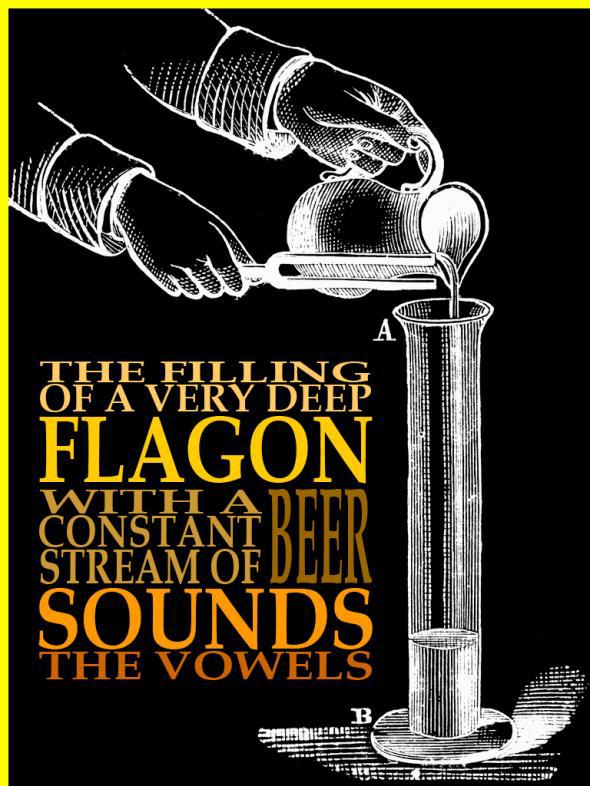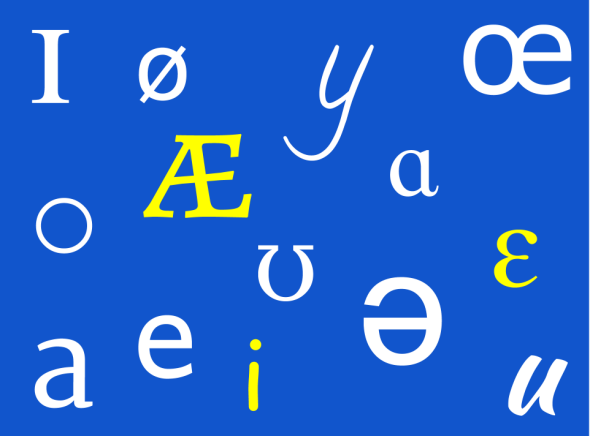How many vowels does English have? Five, right? A, E, I, O, U. Oh, and sometimes Y. So, six? Actually, English has at least 14 different vowel sounds and, depending on the speaker and dialect, maybe more than 20.
What do I mean by this? Well, if we’re talking about spelling, then, yeah, our alphabet has six vowels (maybe seven or eight if you count æ and œ as a single letters in words like archæology and fœtus). But spelling is just the representation of a vowel; even if a language has no written alphabet, it still has vowels. So then, what is a vowel?
We can think about whether a sound is or isn’t a vowel in two ways: the production of the sound and the perception of the sound. Let’s take a look at both of these options.
How do you say a vowel?
Try saying the word “snip”. Now say it again, slowly, focusing on what your mouth and throat and tongue are doing as you go from s to n to i to p. snip.
When you make a consonant sound, you create a blockage or a point of turbulence in the airflow, somewhere between your vocal cords (or vocal folds) and your lips. Where and how this blockage and turbulence happens is what distinguishes one consonant from another (/s/ creates turbulence at the roof of your mouth, just behind your teeth; /n/ is made at the same place, but the air comes out your nose instead). Vowels, however, are sounds that don’t have any blockage or turbulence in the airflow at all. An easy rule of thumb is that a vowel is any sound you can hold while singing (like Whitney Houston) and everything else is a consonant. But what distinguishes one vowel from another?
As a young Isaac Newton noticed in 1665, when you pour beer into a narrow glass, the changing volume makes a series of sounds much like vowels (“the filling of a very deepe flagon with a constant streame of beere or water sounds the vowels in this order w, u, ɷ, o, a, e, i, y”). Think of your mouth and throat as an empty tube (or flagon!)— the shape and volume of the tube determines what kind of sound it will make, kind of like how a trombone makes different musical notes as you move the slide. You can’t slide your mouth-tube, but you can change its shape by opening or closing your jaw, moving your tongue, and rounding your lips.

DS Bigham
One problem with this phonetic definition of vowels is that it doesn’t exclude sounds like “l,” “w,” “y,” or most versions of the American English “r” sound, like in the word squirrel. All of these sounds are also made with open airflow, just like vowels.
How do you hear a vowel?
But vowels aren’t just things we produce, they’re also ideals we perceive as part of a language’s general system of sounds, or phonology. In phonological terms, one way to distinguish between a consonant and a vowel in English is that a consonant can come before a vowel in the same syllable whereas another vowel can’t. So, in a word like yes, the “y” sound at the beginning, even though it doesn’t create blockage or turbulence, is followed by a vowel “e” that we perceive as belonging to the same syllable, so “y” must be a consonant. Similarly, in a word like wood, the “w”—even though it’s produced in exactly the same way as the following “oo”—is considered a consonant because we hear it as the beginning part of the same syllable as the vowel “oo.”
Sometimes we do get two vowel sounds in a single syllable, but we perceive these as a single sound, which we call a diphthong (two=di, sound=phthong), like in the words “choice”, “mouth”, and “price”. If you say the vowels in these words very slowly, you can feel your mouth move from the first part of the diphthong to the second.
But even with the phonological definition of vowel-ness, there’s still no way to exclude the American English /r/ sound, which is clearly what the syllable is being built around in words like “fur” or “her” or “bird” (and “squirrel”—perhaps that’s why it’s so tricky for German speakers). But maybe that’s okay… some linguists actually think that there are actually two American English /r/ sounds: one that’s a consonant and one that’s really a vowel.
Counting vowels
With our revised definition, there are at least 14 vowel sounds that are common to almost all English dialects: These are the sounds in the words BEAT, BIT, BAIT, BET, BAT, BOT, BUTT, BOOT, BITE, BOUT, and BERT. There’s also the vowel in PUT, the vowel in BOYS, and a vowel called schwa.
Depending on your dialect, you might also have vowels in some of BOUGHT, BAUD, BUTTE, BOUY (like BOOEY but as a single syllable), BART, BORE, BEAR, or BALM that are different from any of the first fourteen vowels. And depending on how well you pronounce your borrowed French or German words, you may even have two more vowels, as in BU (French “drank” or German über “over”) and BOEUF (French “beef” or German schön “beautiful”). No wonder dictionary pronunciation guides are complicated!
One way to remember most of these different vowels is in the phrases “Who would know aught of art must learn, act, and then take his ease” and “Fear the poor outside the door; beware of power; avoid desire.” The first contains fourteen different English vowels and the second eight different English diphthongs. They’re still dependent on dialect, but it’s slightly easier than listing all the monosyllabic words that you can think of which begin with “b.”
So… how many vowels are there in English? Well, it turns out that’s not the easiest question to answer, but it’s certainly more than the five or six written letters we use to represent them.
